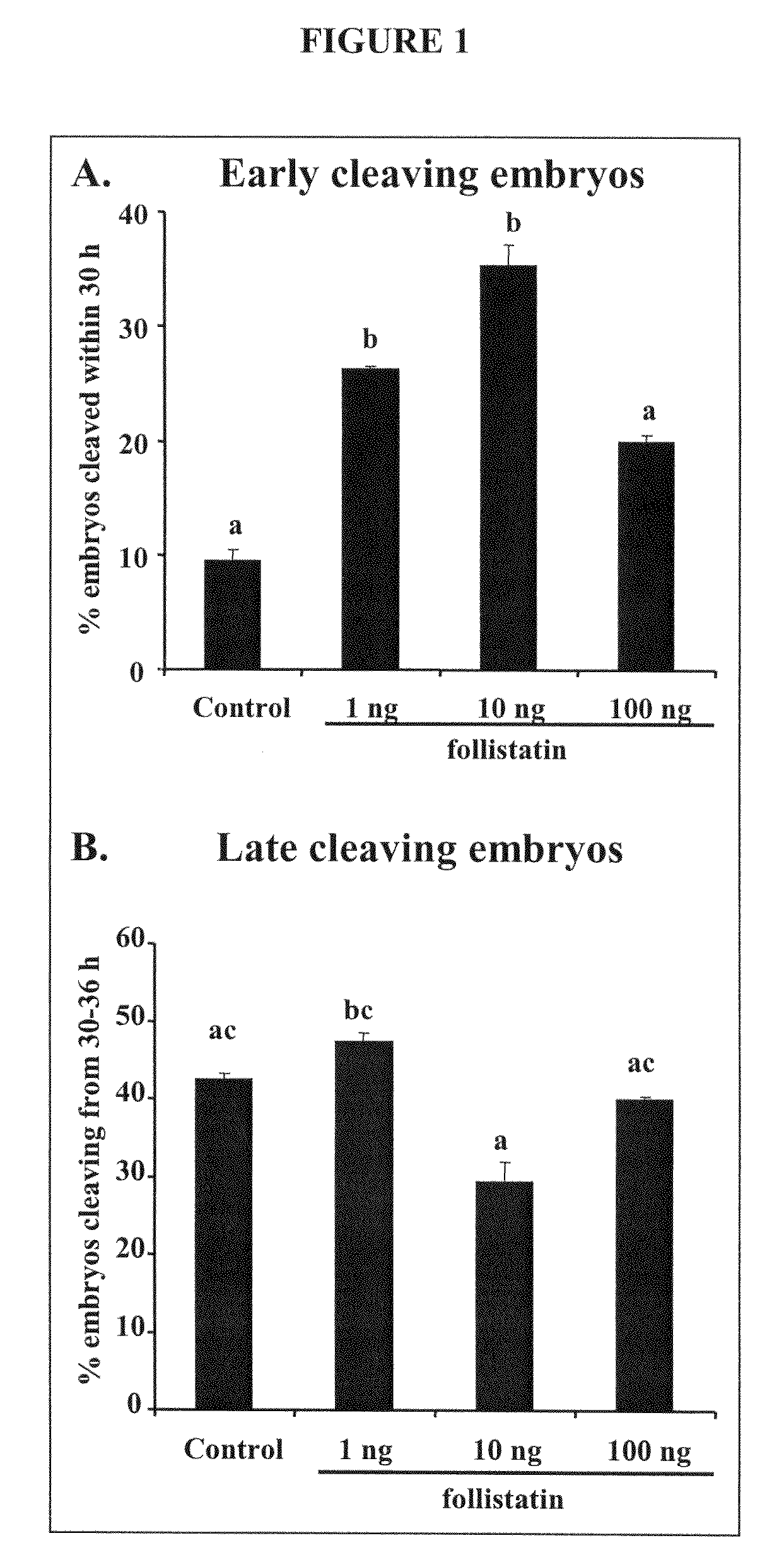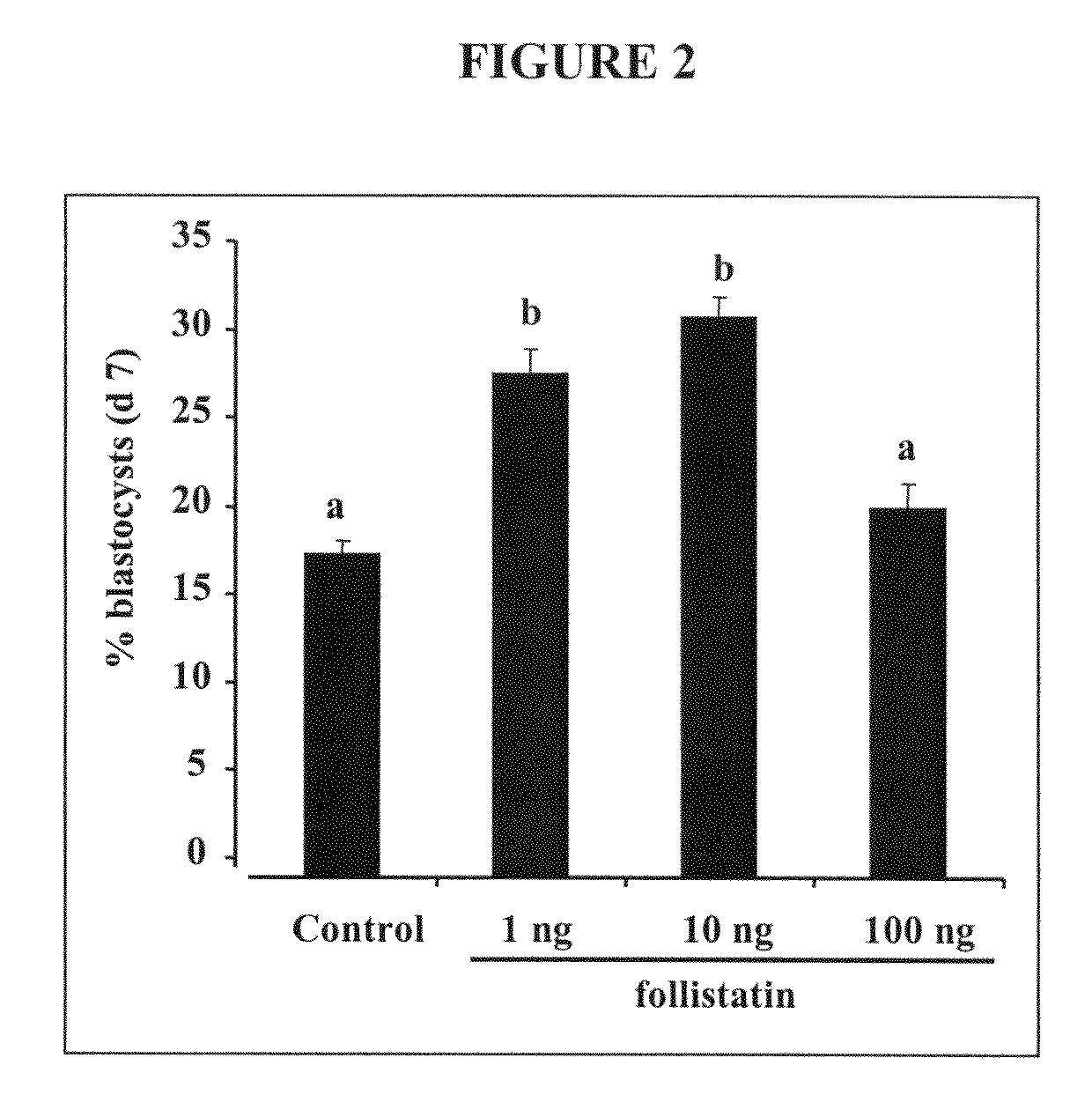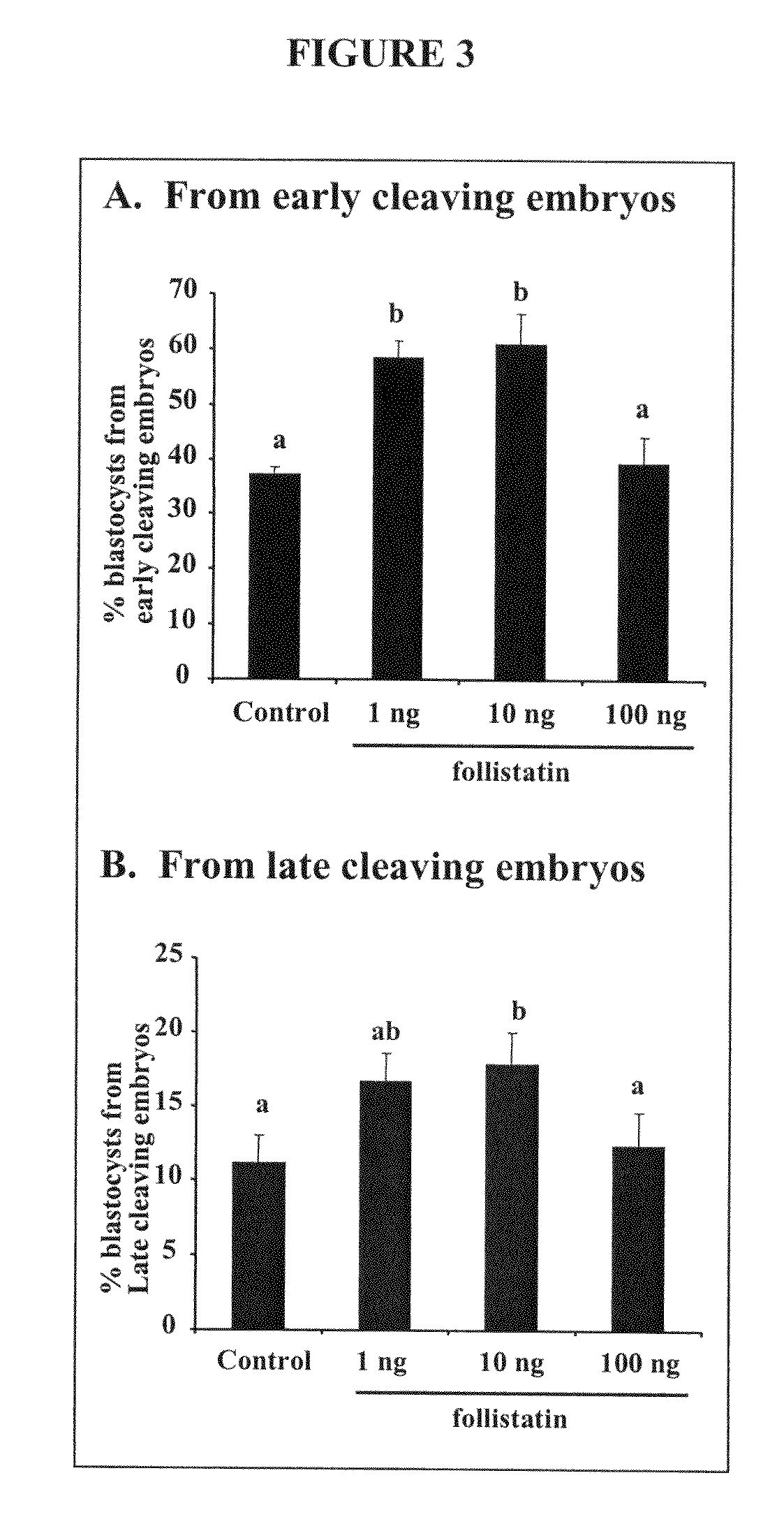Methods and Compositions To Enhance Efficiency Of Nuclear Transfer/Cloning
a technology of nuclear transfer and efficiency, applied in the field of compositions to enhance the efficiency of nuclear transfer/cloning, can solve the problems of low efficiency of cloning/nuclear transfer technology for propagating valuable livestock species, poor oocyte competence contributing to infertility in humans and livestock species, and insufficient oocyte cloning/nuclear transfer technology for human and livestock species propagation, etc., to increase the survival rate of manipulated embryos, increase the number of viable offspring
- Summary
- Abstract
- Description
- Claims
- Application Information
AI Technical Summary
Benefits of technology
Problems solved by technology
Method used
Image
Examples
example 1
Follistatin Supplementation of IVF Embryos
[0143]The effects of follistatin treatment on in vitro produced bovine embryos during the initial 72 h (hour) post fertilization on time to first cleavage (at least a 2 cell embryo), development to the blastocyst stage (day 7, d7) and blastocyst cell allocation (quality) was determined.
[0144]Cumulus-oocyte complexes (COCs) were harvested from ovaries obtained from a local abattoir (slaughterhouse), matured and fertilized in vitro. In vitro maturation of bovine oocytes, and in vitro fertilization and culture of embryos to the blastocyst stage were conducted as reported previously (Bettegowda et al., 2006, Mol. Repro. Dev. 73:267-278; herein incorporated by reference). After 20 h of co-incubation with spermatozoa, presumptive zygotes were stripped of cumulus cells and cultured in KSOM medium supplemented with 0.3% BSA containing 0, 1, 10 or 100 ng / ml Recombinant Human Follistatin (R&D Systems, Minneapolis, Minn., United States) referred to as ...
example 2
siRNA Mediated Knockdown of Follistatin mRNA and its Effect on Development of IVF Embryos
[0147]To determine the need for endogenous follistatin for early embryonic development, the effect of follistatin RNA knockdown (e.g., via microinjection of follistatin siRNA) on time to first cleavage and successful development of in vitro fertilized bovine embryos to the 8-16 cell and blastocyst stages were determined. After 20 h of co-incubation with spermatozoa, presumptive zygotes were stripped of cumulus cells and cultured in KSOM medium supplemented with 0.3% BSA and microinjected with follistatin siRNA (25 μM). Presumptive zygotes injected with similar concentration of negative control siRNA (Ambion Universal Control #1) or water (sham microinjection and uninjected 1 embryos all served as controls).
[0148]Follistatin siRNA injection (25 μM) into presumptive zygotes decreased amounts of follistatin mRNA at the 4-cell stage (FIG. 7) by approximately 80% relative to uninjected, sham injected...
example 3
Follistatin Supplementation Effects on the Development of Nuclear Transfer Embryos
[0149]To demonstrate that follistatin treatment enhances the efficiency of nuclear transfer, the effects of follistatin supplementation on cell allocation and blastocyst development of nuclear transfer embryos was determined. The generation of nuclear transfer embryos was conducted as described by Beyhan et al., 2007, Dev. Biol. 305:637-649; herein incorporated by reference. After nuclear transfer, activation and fusion, embryos were cultured as described in Example 2 (n=4 replicates of 25 embryos per treatment) in the presence of 0, 1, 10 and 100 ng / ml of follistatin. Untreated parthenogenetic embryos were included as quality control for oocytes and the activation procedure. The numbers of trophectoderm (TE) versus inner cell mass (ICM) cells and total cell numbers were determined by cell counts on differentially stained embryos (Machaty et al., 1998, Biol. Repro. 59:451-455; herein incorporated by re...
PUM
| Property | Measurement | Unit |
|---|---|---|
| concentration | aaaaa | aaaaa |
| concentration | aaaaa | aaaaa |
| concentrations | aaaaa | aaaaa |
Abstract
Description
Claims
Application Information
 Login to View More
Login to View More - R&D
- Intellectual Property
- Life Sciences
- Materials
- Tech Scout
- Unparalleled Data Quality
- Higher Quality Content
- 60% Fewer Hallucinations
Browse by: Latest US Patents, China's latest patents, Technical Efficacy Thesaurus, Application Domain, Technology Topic, Popular Technical Reports.
© 2025 PatSnap. All rights reserved.Legal|Privacy policy|Modern Slavery Act Transparency Statement|Sitemap|About US| Contact US: help@patsnap.com



